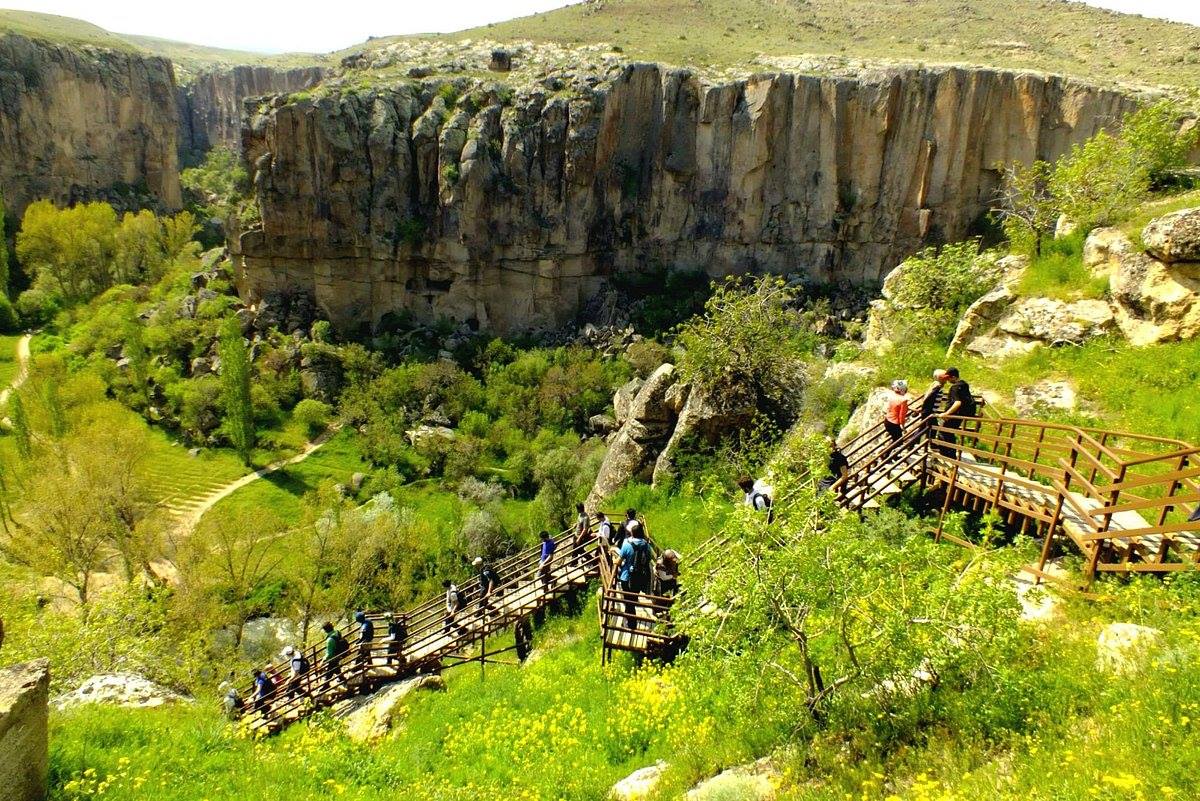Cappadocia Turkey: Hidden Monastery Trek In Ihlara Valley

Imagine walking through a valley where ancient history meets stunning natural beauty. Cappadocia Turkey offers just that with the Hidden Monastery Trek in Ihlara Valley. This trek takes you through a lush canyon carved by the Melendiz River, surrounded by towering cliffs and dotted with rock-cut churches. As you hike, you'll discover hidden monasteries and chapels, many adorned with centuries-old frescoes. The trail is perfect for those who love both adventure and history. Whether you're an experienced hiker or just looking for a unique experience, this trek promises unforgettable views and a glimpse into the past. Ready to lace up your boots?
Cappadocia: A Land of Wonders
Cappadocia, Turkey, is a magical place filled with unique landscapes, ancient history, and hidden gems. One of the most enchanting experiences here is trekking through the Ihlara Valley, where you can find hidden monasteries and churches carved into the rock. Let's explore some of the must-visit spots in this breathtaking valley.
Ihlara Valley: A Trekker's Paradise
The Ihlara Valley offers a serene escape with its lush greenery, flowing river, and ancient rock-cut churches. As you trek through this valley, you'll come across several fascinating sites that tell stories of the past.
- Selime Monastery
Selime Monastery is one of the largest religious complexes in Cappadocia. Carved into the rock, this monastery features a cathedral, monks' quarters, and even a kitchen. The intricate frescoes and stunning views make it a must-see.
- Ağaçaltı Church
Ağaçaltı Church, also known as the Church Under the Tree, is famous for its well-preserved frescoes depicting scenes from the Bible. The church's unique location and beautiful artwork make it a highlight of the Ihlara Valley trek.
- Yılanlı Church
Yılanlı Church, or the Church of the Serpent, gets its name from the frescoes showing Saint George slaying a dragon. The church's interior is adorned with vibrant paintings that have stood the test of time.
Hidden Monasteries: Off the Beaten Path
While the Ihlara Valley is known for its popular sites, there are also lesser-known monasteries that offer a more secluded experience. These hidden gems provide a glimpse into the valley's rich history and spiritual significance.
- Kokar Church
Kokar Church, meaning "Fragrant Church," is tucked away in a quieter part of the valley. Its frescoes, depicting biblical scenes, are remarkably well-preserved. The peaceful surroundings add to the charm of this hidden treasure.
- Pürenli Seki Church
Pürenli Seki Church is another hidden gem in the Ihlara Valley. This church features unique frescoes and a tranquil atmosphere, making it a perfect spot for reflection and exploration.
- Direkli Church
Direkli Church, or the Church with Columns, is named after the columns that support its ceiling. The church's interior is adorned with beautiful frescoes, and its secluded location offers a serene escape from the more crowded sites.
Natural Beauty: The Ihlara Valley's Scenic Wonders
Beyond the monasteries and churches, the Ihlara Valley is also home to stunning natural beauty. The valley's lush greenery, flowing river, and dramatic cliffs create a picturesque backdrop for your trek.
- Belisirma Village
Belisirma Village is a charming spot along the Ihlara Valley trek. This quaint village offers a glimpse into local life and provides a perfect place to rest and enjoy the scenic views.
- Ihlara River
The Ihlara River runs through the valley, providing a refreshing contrast to the arid landscape of Cappadocia. The river's gentle flow and the surrounding greenery create a peaceful atmosphere for trekkers.
- Güzelyurt
Güzelyurt, located near the Ihlara Valley, is a small town with a rich history. The town's ancient churches and stunning views make it a worthwhile addition to your trek.
Practical Tips for Your Ihlara Valley Trek
Before setting off on your adventure, it's essential to be prepared. Here are some practical tips to ensure a smooth and enjoyable trek through the Ihlara Valley.
- Wear Comfortable Shoes
The Ihlara Valley trek involves walking on uneven terrain, so wearing comfortable and sturdy shoes is crucial. Good footwear will help you navigate the rocky paths and enjoy your trek without discomfort.
- Bring Plenty of Water
Staying hydrated is essential, especially when trekking in a valley. Carry enough water to keep yourself refreshed throughout the journey.
- Pack a Picnic
There are several scenic spots in the Ihlara Valley where you can stop for a picnic. Packing some snacks or a light meal will allow you to take a break and enjoy the beautiful surroundings.
- Start Early
Starting your trek early in the day will help you avoid the midday heat and give you more time to explore the valley's hidden treasures.
- Respect the Sites
The monasteries and churches in the Ihlara Valley are ancient and delicate. Be respectful when visiting these sites, and avoid touching the frescoes or disturbing the surroundings.
The Magic of Cappadocia Awaits
Cappadocia's Ihlara Valley offers a unique blend of natural beauty and historical intrigue. Trekking through this hidden gem, you'll encounter ancient monasteries carved into the rock, lush greenery, and the soothing sound of the Melendiz River. Each step reveals a new wonder, from fresco-adorned cave churches to the valley's diverse wildlife. This trek isn't just a hike; it's a journey through time, offering glimpses into the lives of early Christians who sought refuge here. Whether you're an avid hiker or a history buff, the Ihlara Valley promises an unforgettable experience. So, lace up your boots, grab your camera, and get ready to explore one of Turkey's most captivating landscapes. The magic of Cappadocia awaits, ready to leave you with memories that will last a lifetime.

